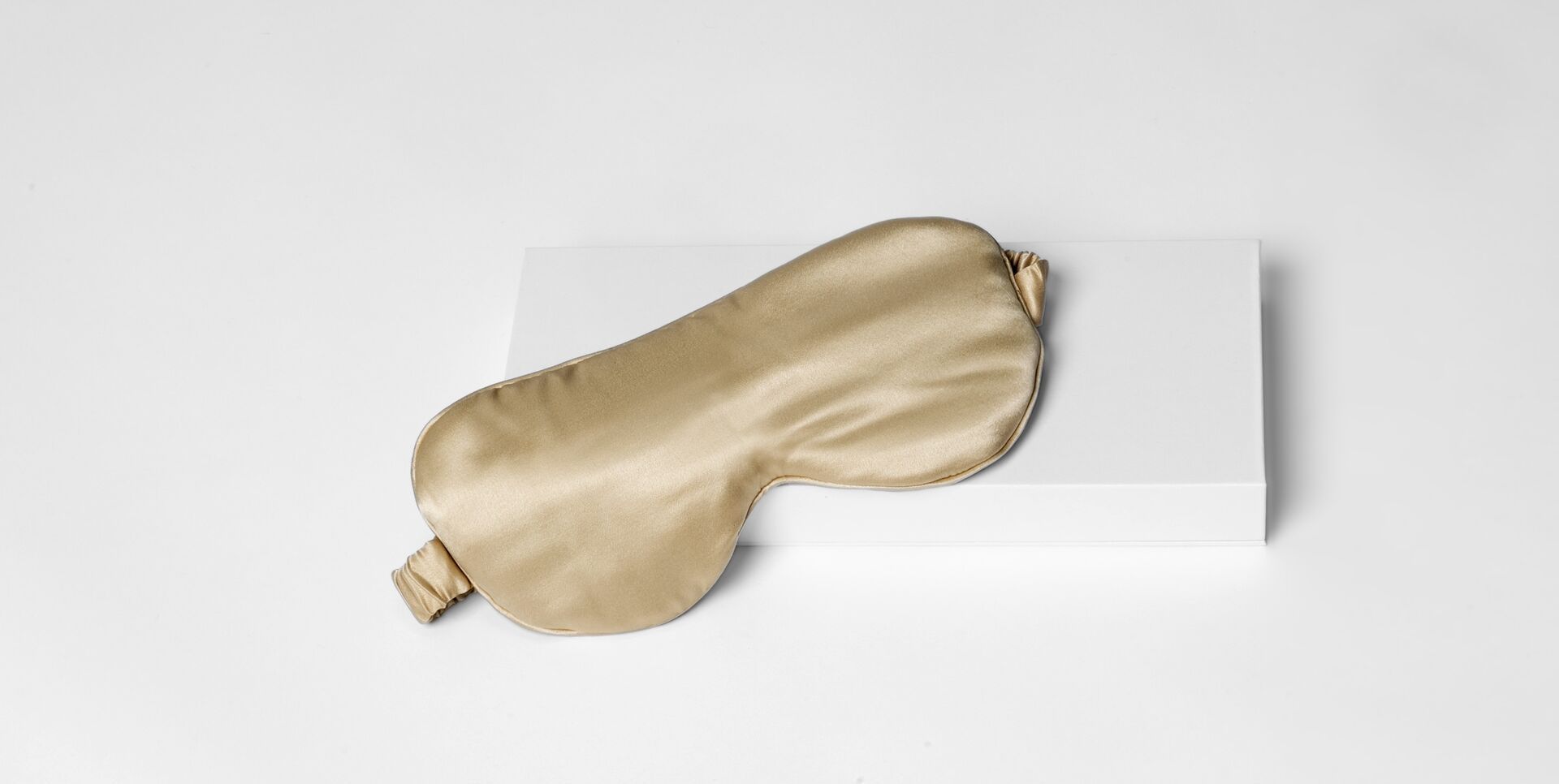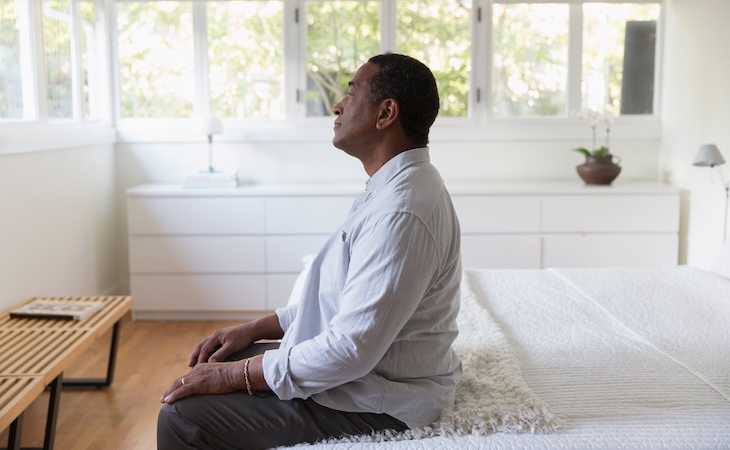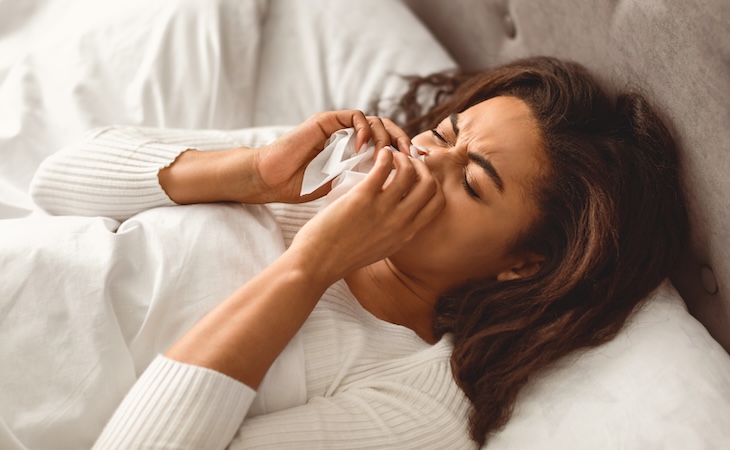Daylight Saving Time (DST) is the annual practice of setting your clocks forward one hour from standard time to make better use of natural light in the warmer months of the year. During this time, the phrase “spring forward” is used to remind everyone to set their clocks forward when DST begins. This change occurs at 2 a.m. on the second Sunday in March and lasts until 2 a.m. on the first Sunday in November, according to your local time.
While DST allows for more daylight in the evenings, it does mean you lose an hour of sleep when you switch the clocks. Although one hour might not seem like it would make a difference to your sleep schedule, it can definitely disrupt your rest and be detrimental to your health.
In fact, according to Shantha Gowda, PsyD, board-certified behavioral sleep medicine specialist, “the transition from standard time to Daylight Saving Time and again back to standard time can cause circadian misalignment. Circadian misalignment is when our biological clock does not match our environmental clock.”
While the purpose of switching to DST is to take advantage of more daylight hours, it disrupts the natural adjustment of your biological clock largely due to late-evening light.
With the switch to Daylight Saving Time just around the corner (it begins this year on Sunday, March 10), it’s important to prepare yourself for what could be a huge shift in your sleep schedule. Here, explore how DST affects sleep and what you can do to keep it from ruining your shuteye.
How Daylight Saving Time affects sleep
As humans, we thrive off of routines in every aspect of our lives, especially our sleep. A sleep routine is one of the most important routines to establish and nurture as your nighttime habits and sleep schedule influence your overall well-being. So, what happens when DST causes you to lose an hour of sleep and alter your sleep routine?
According to Gowda, when you “spring forward” in March, you have darker mornings and brighter evenings, which cause a delay in your sleep window (also known as a phase delay), essentially shifting your bedtime and wake time later.
From a biological standpoint, DST affects your circadian rhythm, which is the approximately 24-hour cycle that regulates different functions in your body, including when you sleep and wake.
“Exposure to sunlight (or light in general) is one of the most important factors in regulating our circadian rhythm, so springing forward can make it more challenging to wake up in the mornings (because of darkness) and make us feel more alert and awake in the evenings (due to later light exposure),” says Gowda.
As DST can cause you to go to bed and sleep much later than you typically would, this results in sleep loss and potential “sleep debt” (which is the accumulative effect of not getting enough sleep). DST’s one-hour shift in our sleep cycle can affect sleep for up to a week, which is especially hard on early risers and those with pre-existing sleep disorders and disturbances, such as teenagers.
Sleep loss can cause forgetfulness, moodiness, poor reaction time, low energy levels, minimal productivity, anxiety, inability to concentrate, risk of diseases, and more—which can cause public health and safety risks. These effects are far more frequent once springtime DST occurs.
For instance, according to a 2019 survey conducted by the American Academy of Sleep Medicine concerning tiredness during “spring forward” week, 41% of people said they feel “somewhat tired” the following week after springtime DST and 14% said they feel “extremely tired.”
Not to mention, the lingering darkness in the mornings and discombobulation people experience as a result of sleep loss increase the number of car crashes and children being injured or killed at bus stops. One study found that on average, there’s a 6% increase in fatal car crashes in the week following the spring DST transition, which is approximately 28 more deaths each year.
Due to the negative impact DST can have on our sleep schedules and well-being, sleep experts like Gowda argue standard time is better for your sleep and should be made permanent rather than DST. “Standard time aligns best with our biological clock as staying in DST will cause us to have permanent phase delay, which can lead to chronic sleep loss,” says Gowda.
Daylight Saving Time sleep tips
While the one-hour shift in time is unavoidable, knowing when it will occur gives us the upper hand and the opportunity to better prepare ourselves. Check out these six tips to make the transition to DST easier.
1. Adjust your bedtime before DST
Gowda says training your body to gradually shift its sleep time and wake time in the days leading up to DST is the best way to adjust to the one-hour change. For spring forward, gradually shift your bedtime and your wake time 15 to 20 minutes earlier each night for two to three nights before DST. On the Saturday night before DST, set your alarm to wake up an additional 15 to 20 minutes earlier.
2. Prioritize getting enough sleep before and after DST
In general, the average adult needs seven to nine hours of sleep, according to the Centers for Disease Control and Prevention. Since DST already causes sleep disruptions and makes it difficult to catch up on one hour of sleep, it’s important you don’t have any sleep debt before or during the DST transition week as the time change can make it even harder to fix your sleep schedule.
In the days leading up to DST, ensure your shifting sleep and wake times are consistently getting you seven to nine hours of sleep each night and that you continue getting a good amount of sleep after.
3. Spend time outside
Since your circadian rhythm is heavily influenced by natural light, going outside when the time changes can help set your body clock and allow you to sleep better and wake up easier.
During spring forward, maximize sunlight exposure in the morning to prevent any sleepiness and dim the lights in the evening to promote melatonin production and prepare your body for bedtime.
4. Adjust your evening routines
In the days leading up to DST, it’s essential you adjust other routines—such as mealtimes, exercise, and nighttime routines—in accordance with your evolving bedtime.
Most people make the mistake of eating or exercising late and neglecting their nighttime routines when shifting their bedtime earlier, which can directly impact how fast you fall asleep, the quality of your sleep, and how long you sleep. When approaching DST, simply shift all of your routines 15 to 20 minutes earlier than usual.
5. Optimize your bedroom for sleep
Although the time change and the change in seasons expose you to more daylight, you can set up your sleep space to encourage good sleep year-round.
Throughout DST, use lamps and candles or dim the lights in the evenings to prep your body for sleepy time. Once you’re in bed, use blackout curtains, blackout shades, or eye masks to block out any remaining light outside or artificial light in your home. During the day, take advantage of the sunlight outside to keep you alert.
6. Avoid sleeping in an hour the morning after DST
Sleeping in an extra hour on Sunday morning after DST sounds like a simple solution—but in reality, it can still cause sleep disturbances in the week to come.
Taking that extra hour of sleep will throw off your circadian rhythm, especially since you’d be sleeping during daylight hours. Instead, opt for a 20-minute power nap that Sunday afternoon. Avoid sleeping for a longer time or closer to bedtime as it’ll make it difficult to fall asleep. Gowda also recommends avoiding increasing your caffeine intake and frequent naps throughout the day unless you need help staying awake.
The bottom line: While the DST hour shift may seem insignificant, if you don’t prepare yourself before the change, it can create longer and more expansive repercussions. But as long as you learn how to adapt and stay vigilant after the change, your internal clock should catch up with your digital one in no time.
FAQs
What is Daylight Saving Time?
Daylight Saving Time is the annual practice of setting your clocks forward one hour from standard time to make better use of natural light in the spring and summer. This change occurs at 2 a.m. on the second Sunday in March and lasts until 2 a.m. on the first Sunday in November, according to your local time.
How does Daylight Saving Time affect your overall health?
Daylight Saving Time affects your circadian rhythm (the internal clock that controls when you sleep and wake up) as you lose an hour of sleep when the clocks are set forward and the lingering daylight in the evening prevents you from going to sleep on time. As a result, you can experience sleep loss and potential sleep debt that interferes with your physical, emotional, and mental well-being.
Should you adjust your sleep schedule for Daylight Saving Time?
It’s recommended to adjust your sleep schedule in the days leading up to Daylight Saving Time to better prepare your body for the hour shift. During the springtime DST, gradually shift your bedtime and your wake time 15 to 20 minutes earlier each night for two to three nights before. On the Saturday night before DST, set your alarm to wake up an additional 15 to 20 minutes earlier. Ensure each of these nights results in seven to nine hours of sleep.






